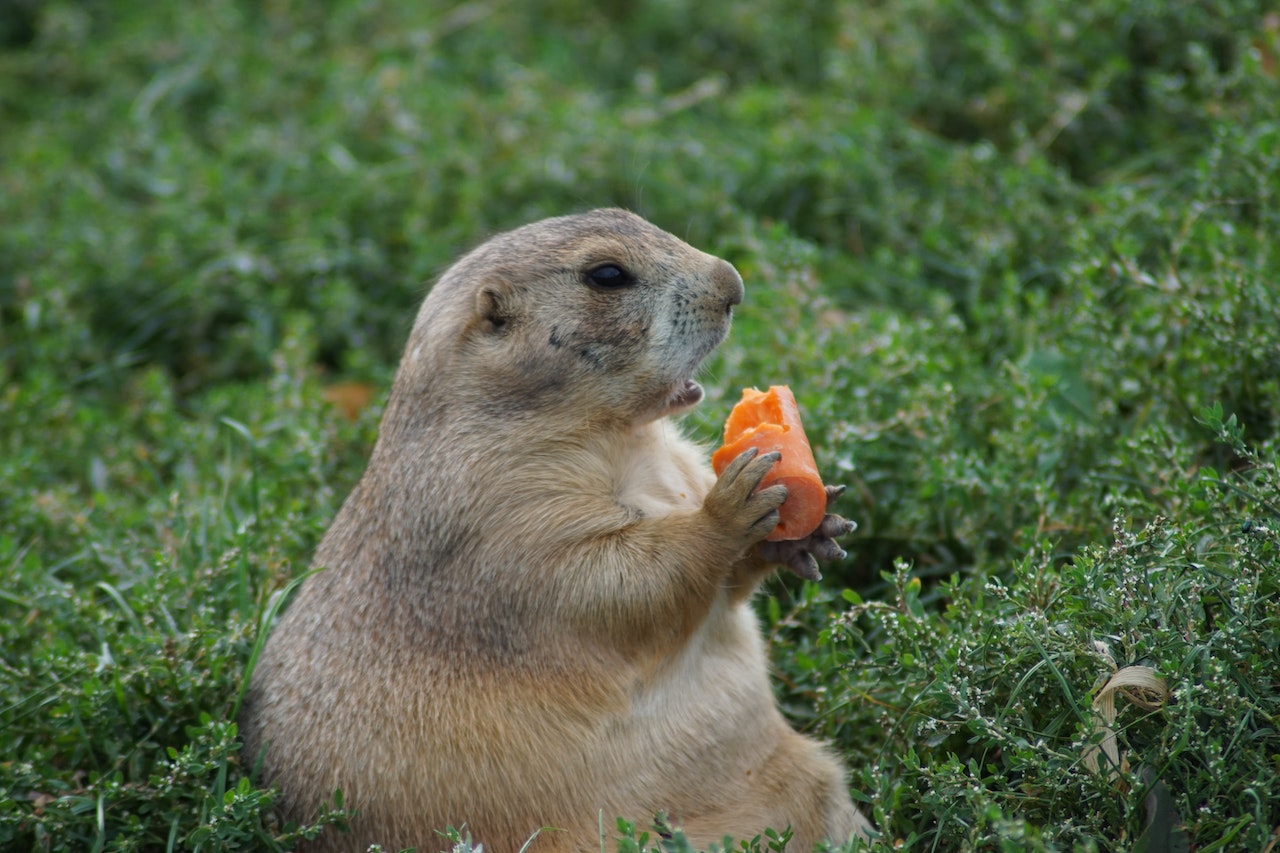Pocket gophers, often seen as a nuisance to homeowners and gardeners, actually play a crucial role in maintaining healthy ecosystems. These fascinating creatures, known as “pocket gophers,” possess unique adaptations and contribute to soil health and plant diversity. In this blog post, we will delve into the world of pocket gophers. We will explore their characteristics, habitats, and the various species that inhabit North America. We will also provide tips for managing the presence of pocket gophers in your yard and garden while appreciating the benefits they bring to our environment.
Key Takeaways
- Pocket gophers are burrowing rodents found in the Western Hemisphere, with physical features and behavior adapted to their respective environments.
- Non-chemical control methods such as trapping and habitat modification can be used to manage pocket gopher populations without causing harm.
- Proactive preventive measures, legal considerations, permits & regulations should be taken into account when coexisting with pocket gophers.
Pocket Gopher Basics
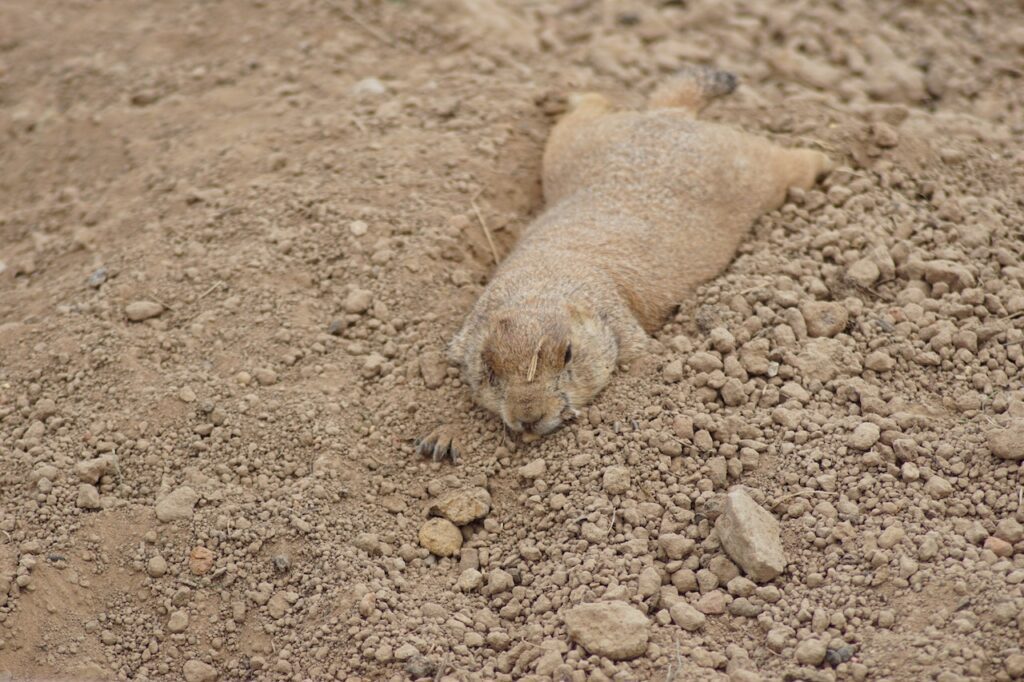
Pocket gophers, including the elusive giant pocket gophers, northern pocket gophers, and western pocket gophers, are medium-sized burrowing rodents, easily identified by their fur-lined cheek pouches and powerful digging abilities. These creatures are exclusively found in the Western Hemisphere. Their geographic range stretching from Panama in the south to Alberta in the north. Their fur can vary in color, often resembling the local soil, which makes them perfectly adapted to their environment.
There are 35 species of pocket gophers represented by five genera, with 14 species and three genera found in the United States. Some of the most prevalent North American species include the plains pocket gopher, northern pocket gopher, and Botta’s pocket gopher. Each species has adapted to its specific environment, enabling them to thrive in various habitats.
Physical Features
Pocket gophers possess a unique set of physical adaptations that enable them to thrive in their underground habitats. They have large, powerful front claws for digging, small eyes and ears to prevent dirt from entering. They also have sensitive whiskers to help them navigate in the dark.
These adaptations make them well-suited for their fossorial lifestyle. They allow them to create extensive burrow systems in search of food and shelter.
Pocket Gopher Species
While various species of pocket gophers are found across North America, each species occupies a specific geographic range and adapts to its environment accordingly. For instance, the northern pocket gopher is found throughout much of the northwest region of the United States. In comparison, the southeastern pocket gopher is present in northern and central Florida, southern Georgia, and southeastern Alabama.
These species of pocket gophers are just a few examples of the diverse range of habitats they occupy, showcasing their adaptability and resilience.
The Life and Habits of Pocket Gophers
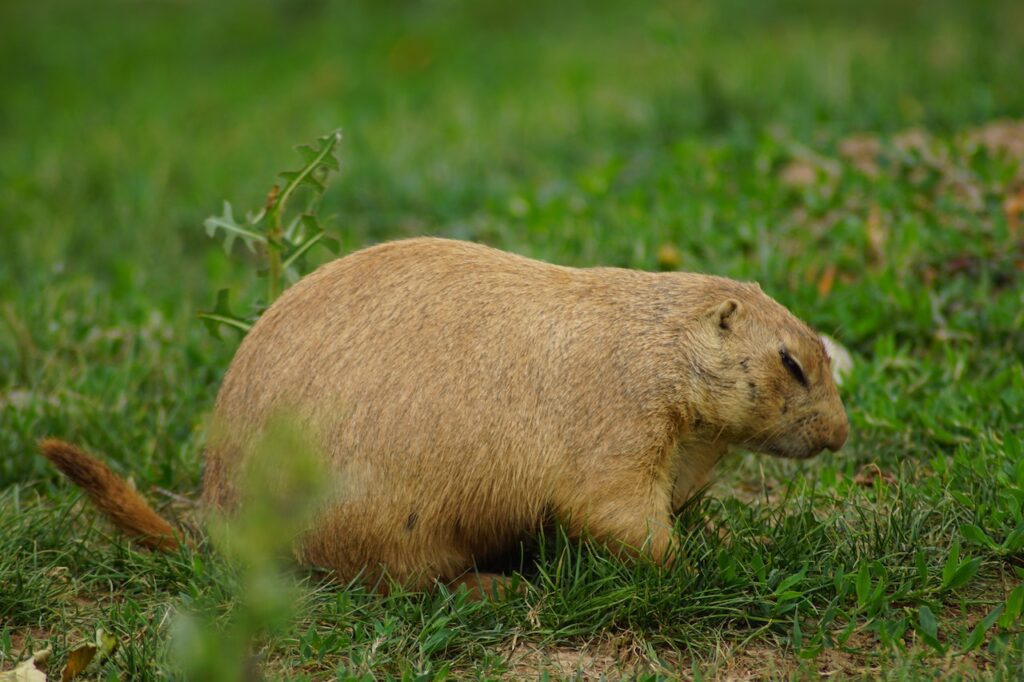
Pocket gophers are unique creatures, exhibiting a variety of behaviors and habits that enable them to survive and thrive. They are herbivores, consuming a diverse diet of plants, such as:
- grasses
- roots
- tubers
- insects
- worms
Pocket gophers are also known for their solitary nature and territorial behavior. They live in complex underground burrow systems that can cover a significant area. These burrow systems provide them with shelter and protection from predators and serve as their primary means of locating food sources.
Learning how to identify pocket gopher activity is a key aspect of managing them in your yard or garden. For effective control, it is vital to locate their primary burrow system accurately. In the following sections, we will explore various methods for identifying pocket gopher activity. We will also discuss strategies for managing their presence while minimizing damage to your property.
Behavior and Social Structure
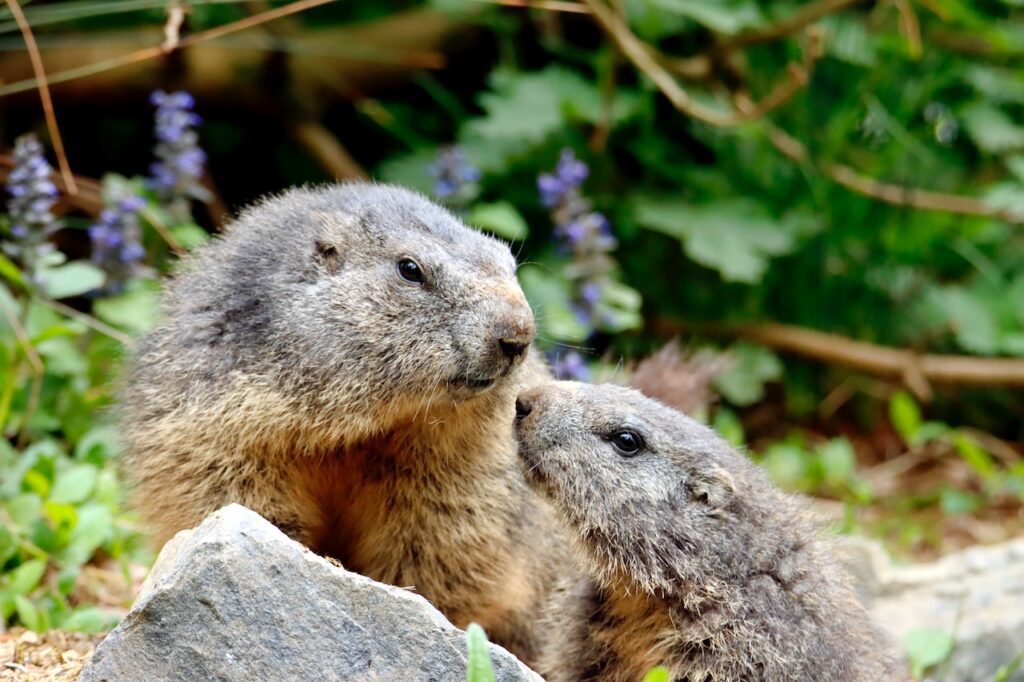
Plains pocket gophers are solitary animals, residing in extensive underground tunnel systems where pocket gophers spend most of their time. They are highly territorial and aggressive towards one another, except during the mating season.
These tunnel systems can cover a large area, with burrows measuring 2½ to 3½ inches in diameter. Though they have some natural predators, such as owls, snakes, and coyotes, relying exclusively on these predators may not provide adequate control.
Hence, it is advisable to take prompt and effective action, typically through trapping or by using the method to place pocket gopher bait, to manage pocket gopher populations.
Diet and Feeding Habits
Pocket gophers have a diverse diet, consuming a wide range of plant matter, including:
- shoots
- grasses
- roots
- tubers
- bulbs
- nuts
- seeds
- vegetables
They do not consume animal matter and are solely herbivores.
Their foraging consists of digging tunnels and burrows for food, using their powerful claws and teeth to break through the soil. Some prefer forbs in their diet. Alfalfa, dandelion and prickly pear cactus are common choices.
Preferred Habitats
Pocket gophers are typically found in:
- open, grassy areas with loose, well-drained soil
- meadows
- pastures
- agricultural fields
They can adapt to a variety of environments. Their preferred environment is made up of sandy soil and edible vegetation. This type of terrain offers them the perfect conditions for living.
This adaptability allows them to thrive across a wide range of geographical elevations, soils, and conditions.
Identifying Pocket Gopher Activity

Effective management greatly depends on recognizing the signs of pocket gopher presence. One indication of recent activity is the presence of fresh mounds of dark, moist soil. These mounds are typically crescent- or horseshoe-shaped and can help determine if pocket gophers occupy a tunnel system in your yard or garden.
Another method for identifying pocket gopher activity is locating and identifying their tunnel entrances. Pocket gopher tunnel entrances are usually plugged with dirt or soil to maintain a sealed system and protect the gopher from potential predators. By examining the area around these plugged entrances, you can gain insights into their burrowing habits and better understand their impact on your property.
Gopher Mounds
Gopher mounds are fan-shaped piles of soil created by pocket gophers as they dig their extensive gopher burrow systems. These distinctive mounds can help you identify the presence of pocket gophers in your yard or garden and determine the extent of their burrowing activity, as gophers create burrows.
Fresh gopher mounds are characterized by dark, moist soil and visible aboveground plugged openings of lateral tunnels. By monitoring these mounds, you can assess your property’s level of pocket gopher activity and take appropriate action to manage their presence.
Tunnel Entrances
Locating and identifying pocket gopher tunnel entrances can be a valuable tool in managing their presence on your property. By understanding the layout of pocket gopher tunnels, you can better target these entrances. They are typically plugged with dirt or soil to maintain a sealed system and protect the gopher from potential predators.
To locate a tunnel entrance, look for small mounds of dirt or soil near the entrance and observe if the hole is plugged within a day or two, indicating an active tunnel system. By identifying these entrances, you can better understand the extent of pocket gopher activity on your property and implement effective control measures.
Managing Pocket Gophers in Your Yard and Garden
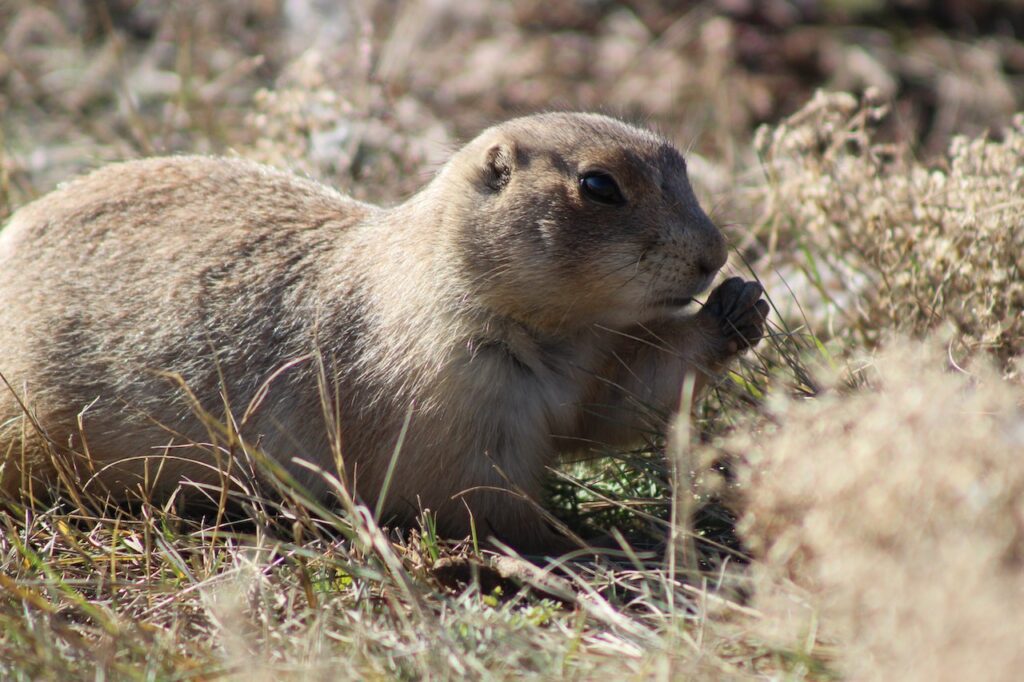
Effectively controlling pocket gophers in your yard and garden involves a combination of strategies tailored to the specific situation. These strategies can include non-chemical control methods, such as trapping, flooding, and fencing, as well as chemical control methods like toxic baits and fumigation.
Accurate location of the primary burrow system is crucial for the appropriate placement of bait or traps, ensuring effective control. Additionally, monitoring the area regularly for re-infestation and leveling existing mounds after a control program can help you maintain a gopher-free yard or garden.
Non-Chemical Control Methods
Non-chemical control methods provide an alternative to toxic baits and fumigation for managing pocket gopher populations. These methods include trapping, habitat modification, and utilizing natural predators like snakes, coyotes, foxes, and birds of prey.
Trapping involves setting traps in gopher tunnels to capture the animals, while habitat modification seeks to reduce gopher food sources and make the area less attractive to them. By employing these non-chemical control methods, you can effectively manage populations while minimizing the impact on the surrounding environment.
Chemical Control Methods
Chemical control methods involve the use of toxic baits and fumigation to control pocket gopher populations. Strychnine-treated grain is the most effective type of pocket gopher bait, as it is lethal with a single ingestion. To ensure proper bait placement, it is crucial to locate the primary burrow system accurately and cover the probe hole with a sod clump, rock, or other material to avoid exposing the bait to light and dirt.
While chemical control methods can be highly effective, it is essential to follow local regulations and permits regarding the use of these methods.
Coexisting with Pocket Gophers
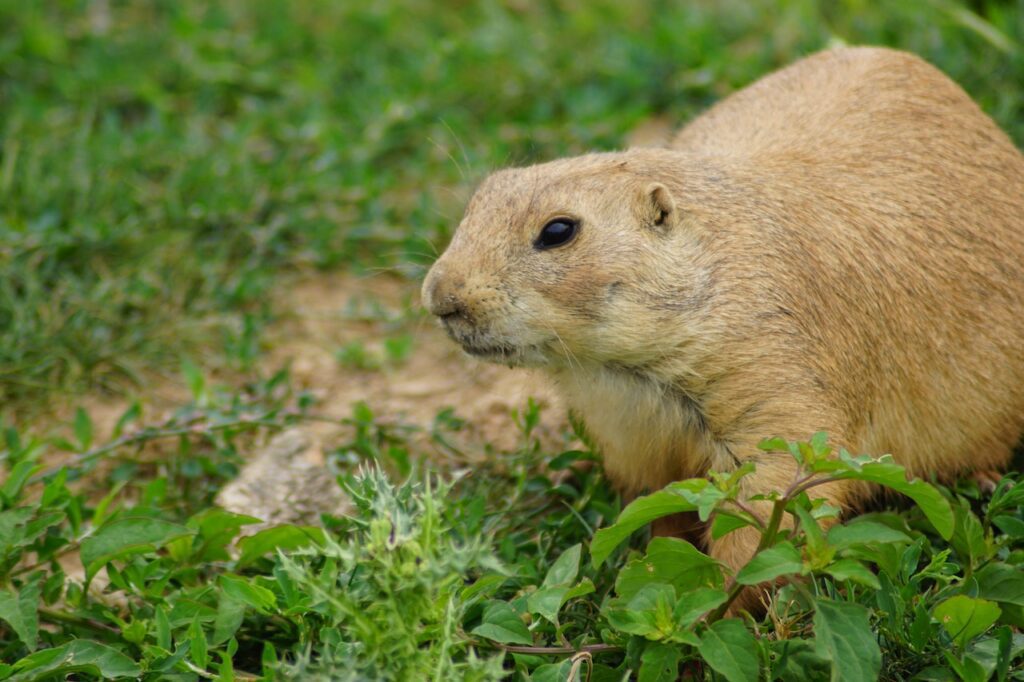
Despite the potential for damage to lawns, gardens, and properties, pocket gophers offer several ecosystem benefits including soil aeration, seed dispersal and plant diversity support. With damage prevention strategies in place and an appreciation for their positive environmental contributions, successful coexistence with these intriguing creatures is possible.
Preventing damage involves:
- Establishing barriers around areas where gophers are likely to cause harm, such as installing fencing, using gopher wire, or employing gopher baskets
- Eliminating food sources
- Maintaining the area surrounding the gopher’s burrow clean
These measures can discourage gophers from entering your property.
Learning to coexist with these unique creatures is possible by implementing these preventative measures and understanding the ecosystem benefits they provide.
Preventing Damage
Protecting your plants and property from pocket gopher damage can be achieved through a variety of techniques, such as:
- Installing underground fencing
- Using mesh wire
- Using non-galvanized steel wire for shrubs and trees that only require protection during their early years.
Additionally, encircling underground flexible sprinkler lines and utility cables with coarse gravel can dissuade gophers from causing damage. By employing these methods, you can minimize the impact of pocket gophers on your property while still appreciating the benefits they bring to the environment.
Appreciating the Benefits
Pocket gophers play an essential role in maintaining healthy ecosystems. They facilitate aeration and mixing of soil, which improves water infiltration and drainage, as well as decreasing soil compaction. Additionally, they aid in the dispersal of seeds, thus augmenting the diversity of plants in a given region.
Pocket gophers also serve as a food source for predators such as owls, hawks, and coyotes. By understanding and appreciating the positive contributions pocket gophers make to the environment, we can learn to coexist with these fascinating creatures.
Legal Considerations
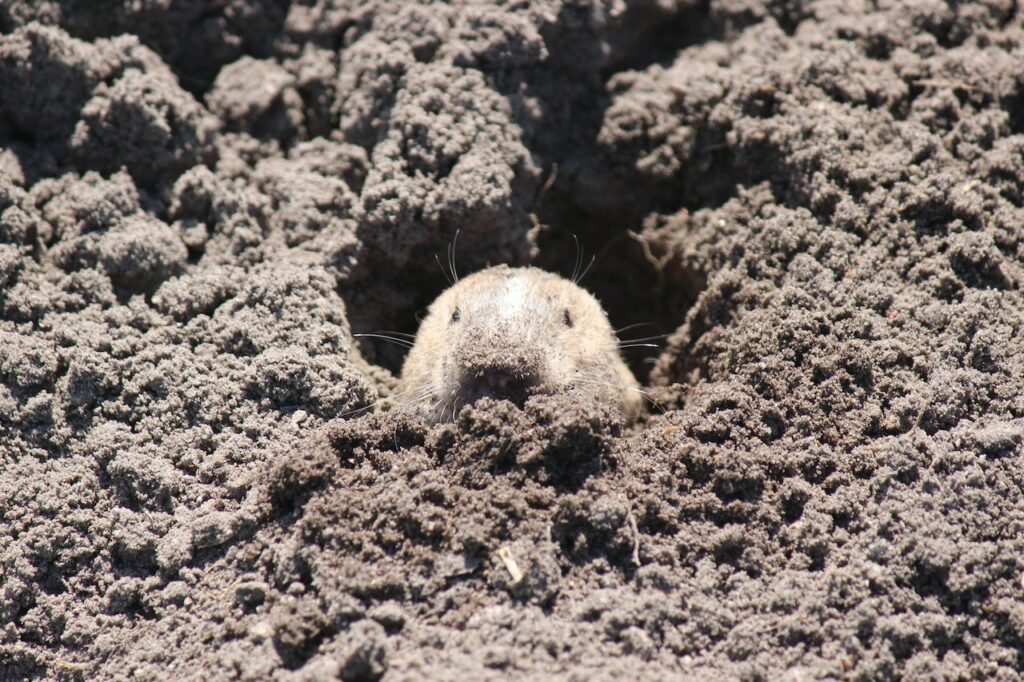
Although pocket gophers are typically not protected by federal or state law, awareness of any applicable local permits or regulations to their management is crucial. Some materials used for gopher control may require a permit from the county agricultural department, and it is crucial to consult with your local authorities for specific regulations.
In some cases, certain subspecies of pocket gophers, such as the mazama pocket gophers, may be classified as threatened under the Endangered Species Act, requiring additional legal considerations for their management.
Ensuring your efforts to manage pocket gopher populations are both effective and responsible can be achieved by being cognizant of the legal protections for pocket gophers and adhering to the appropriate regulations.
Protection Status
Pocket gopher species are found in large numbers. They do not require conservation efforts at the moment. In California, for example, pocket gophers are categorized as non-game mammals, meaning they are not protected by state law.
Nonetheless, awareness of any specific legal protections for pocket gophers in your area is vital, as some subspecies might be classified as threatened under the Endangered Species Act, necessitating extra legal considerations for their management.
Permits and Regulations
Permits and regulations may be necessary when managing pocket gophers, particularly when using certain materials for gopher control. For example, some materials, such as toxic baits or fumigants, may require a permit from the county agricultural department.
Consulting with local authorities to ascertain specific regulations related to pocket gopher management is vital to ensure your control methods are both lawful and responsible.
Summary
In conclusion, pocket gophers are fascinating creatures that play a vital role in maintaining healthy ecosystems. By understanding their characteristics, habits, and the various species found in North America, we can better manage their presence in our yards and gardens while appreciating the benefits they bring to the environment. Employing a combination of prevention strategies, non-chemical control methods, and legal considerations will help ensure that we can successfully coexist with these unique animals, safeguarding our property and supporting the ecosystems they inhabit.
Frequently Asked Questions
How big is a gopher?
Gophers are approximately 6-8 inches in body length, with a tail 2.5-5 cm long, and typically weigh around 200 g (12 lb). Adult males tend to be larger than females, with some species reaching a weight of 1 kg (2.2 lb).
What are some methods for averting destruction caused by pocket gophers?
Establishing barriers, installing fencing, utilizing gopher wire, and employing gopher baskets are effective methods for averting destruction caused by pocket gophers.
What are the benefits of pocket gophers in a garden?
Pocket gophers can aerate and mix soil, increasing water infiltration and drainage and reducing compaction. They also help disperse seeds, boosting the diversity of plants in a garden.
What is the legal status of pocket gophers?
Pocket gophers are not typically protected under federal or state law, although certain subspecies may be classified as threatened and require additional legal considerations.
What are some non-chemical methods for controlling pocket gophers?
Non-chemical methods for controlling pocket gophers include trapping, habitat modification, and utilizing natural predators.

